Since the pandemic began, the majority of Alaska’s child care programs have been open to support children and families. But the demand for child care has been fluctuating as families grapple with returning to the workplace and school safely. Without steady enrollment while mitigating COVID-19, child care programs have been faced with uncertain or reduced income and increasing expenses to stay open and operate safely. After nine months of business interruptions, child care’s survival remains at risk.
Assessing the Need & Response (to date)
thread has stayed in close contact with child care programs to stay on top of the evolving situation throughout the pandemic. In June 2020, thread conducted a phone survey with 304 licensed child care programs across the state to learn about the initial challenges and needs. At that time, child care was beginning to feel the financial pinch to their businesses. Additionally, child care programs, early educators, and families were deeply concerned about the health risks of COVID-19, and programs were adapting mitigation strategies to keep children safe.
In response to the evolving crisis, thread took action to help stabilize the system. This included advocating for $18.5 million CARES Act funding to be dedicated in local communities to child care. thread also awarded more than $1.5 million in financial assistance to licensed child care programs, in partnership with the State of Alaska Department of Health & Social Services, the Alaska Community Foundation, the Mat-Su Health Foundation, and the Rasmuson Foundation. To support child care with PPE/supplies, thread partnered with the Rasmuson Foundation and the University of Alaska Anchorage College of Health on an initiative to connect Alaska organizations to supplies.
Recognizing that more support may be needed, thread conducted a second survey of 260 licensed child care and after-school/school-age programs in November 2020, to assess current and future needs. The results show a system still in crisis, indicating a need for continued relief and stabilization efforts.
Factors Challenging the System
Throughout the pandemic the factors challenging the system have been consistent, although the impact of these factors on the system has worsened.
- Child care enrollment: Child care programs are experiencing fluctuating enrollments but have capacity to serve more children. This is the primary cause for their decreasing revenue and financial need.
- Elevated health and safety requirements: Child care programs are successfully implementing an intensified level of health and safety protocols and procedures for physical distance, mitigation, screening, and sanitation. This requires more supplies, staff time and training, and increases operating costs.
- Supplies: Child care programs need cleaning and disinfecting supplies and equipment, personal protective equipment (PPE), screening equipment, and sanitizing solutions to protect the staff and children they serve.
- Labor: The demands on the early childhood workforce have increased with new group sizes, health and safety protocols, and the health risks. Programs are offering higher compensation and flexibility to support staff. Additionally, some early educators have not returned to the classroom due to the health risk which is leaving vacant positions. Labor has also increased due to following CDC isolating and guaranteeing guidelines.
- Behavioral Health: Child care programs need access to early childhood mental health consultation and other behavioral health supports and services to support children, families and staff experiencing an increase of trauma during this time.
Key Findings
The key findings from November’s survey show a heightened need for continued financial investment and support for Alaska’s child care system to ensure it does not collapse in 2021.
Key findings include:
- Child care businesses are concerned about survival in 2021. Child care programs have received some federal and State funding, but continue to struggle from the financial challenges caused by the pandemic and need additional financial support.
- Child care programs have capacity to serve more children, but families are balancing the health risks with changing work/school situations and not fully returning to child care yet.
- COVID-19 in child care has mirrored community spread, but child care has successfully adapted its procedures for mitigation and response.
- Child care programs are struggling more than ever to recruit and retain qualified staff.
- Child care programs continue to need PPE and supplies.
- Child care programs are assisting families in need with reduced tuition, food, clothing, supplies, and more. Some of this is being supplemented by the personal savings of child care program owners.
These results mirror national trends. Child care’s decreased capacity, reduced income, and increased costs from health mandates have disrupted an already financially unstable system. Although relief has come through federal and State programs, the issues are continuing. As the pandemic continues the child care crisis worsens.
Data Highlights
This data snapshot highlights the key findings from thread’s November survey of 260 licensed child care and after-school/school-age programs. More than 50% are concerned about having to close within the next 12 months, and have the following needs in order to stay open.
Funding
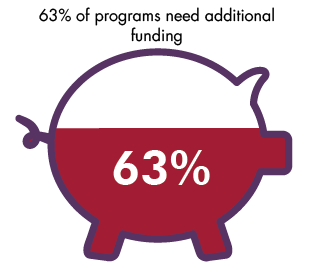
Concern for Their Future
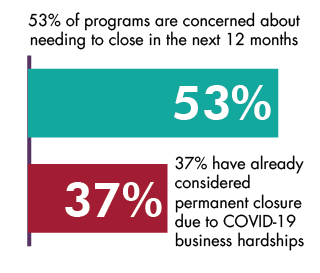
Child Care Enrollment (Capacity)
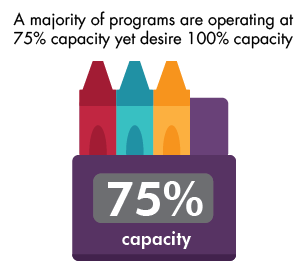
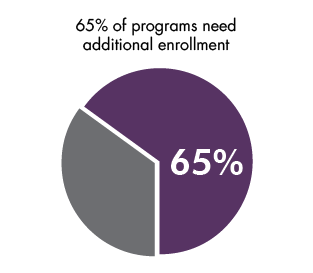
76% of respondents are currently enrolling new children
Access to PPE & Supplies
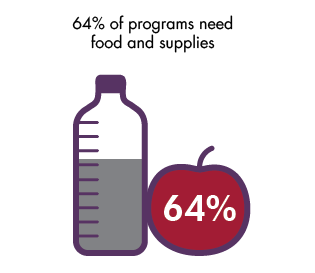
Staff
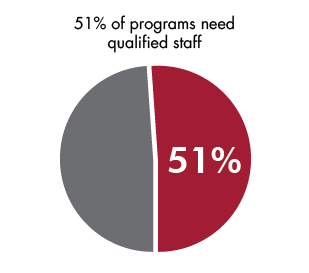
Desired Outcomes from Continued Investment
With continued financial investment Alaska can ensure the survival of the current child care system. This critical infrastructure provides our communities with the benefits of the licensed care needed and desired by children, families and employers.
For Child Care Programs
Business resilience and program stabilization
Operating safely and effectively
Support for social and behavioral health needs of staff and children
For Families
Return to their workplace
Reduced cognitive load trying to figure out child care
Reduced stress about their children in unstable child care arrangements
For Children
Safe, healthy, learning and loved
More predictable routines, which adds resiliency during traumatic times
School readiness
For Employers
Increased availability of workers
Reduced absenteeism
Higher productivity due to less distractions from trying to solve child care struggles
For Community
Reduced coronavirus transmission within child care
Families and businesses contributing to the economy

